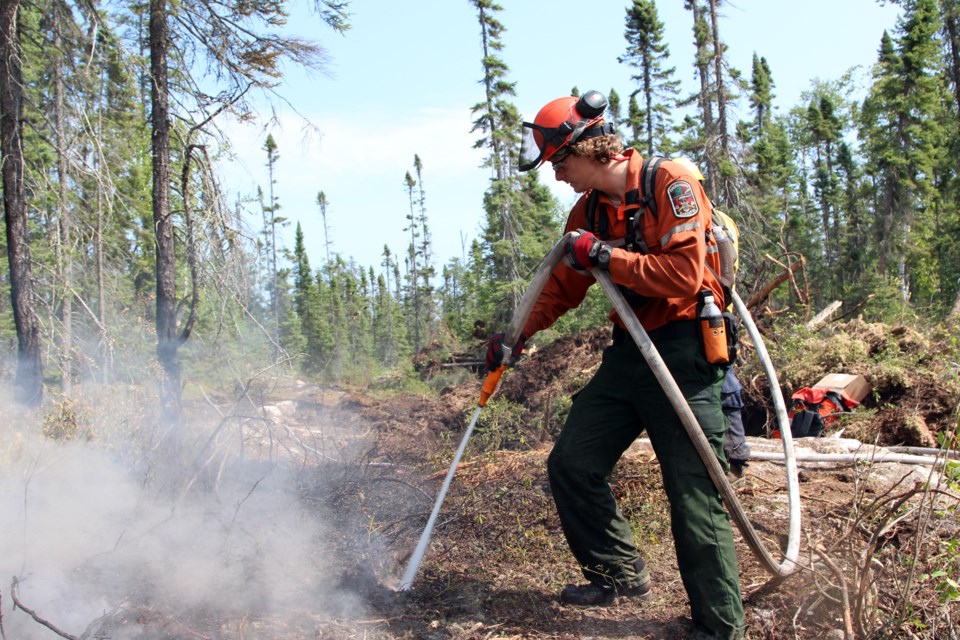The 2022 Ontario forest fire season never really ignited after a record-setting prior year.
This year, across the province, there were a total of 268 wildfires reported. Only 82 of those were in the northwestern region of the province, with those fires accounting for 113 hectares burned.
In 2021, there were nearly 1,200 forest fires reported across the province, which scorched a record-breaking 784,000 hectares.
The province typically recognizes the end of October as marking the conclusion of the fire season.
“Here at the end of the 2022 fire season, this is the kind of thing you see in fire season severity year-to-year, especially when you contrast our number this year with that of 2021, which was a record for hectares burned not only in the northwest but in the province itself,” fire information officer Chris Marchand said on Tuesday.
“Definitely a notable difference, but not uncommon. If you look back into the last 10 or 20 years, you can see several examples of years of low fire severity."
Marchand said 2004, 2008, and 2014 were similar to this year’s fire season. Over a 10-year average, there were 825 forest fires per year.
“In the grand scheme of things, these are fairly common types of years,” Marchand said.
Factors that played into the low numbers included above-average snowfall and massive spring flooding across Northwestern Ontario.
“That wet start to the fire season had several effects on our regional fire operations, as well as regular widespread rainfall into the summer months. When that happens, you see plenty of moisture in the dust and the deep layers of the soil, which really discourages lightning strikes from developing into wildland fires,” Marchand said.
Marchand said lighting strikes are typically the cause of most forest fires, but this year, human-caused fires surpassed those started naturally.
Since there weren’t a lot of forest fires this year, Marchand said crews were using their skills elsewhere.
“We had fire rangers in various locations filling sandbags for flood-affected residences this year. We also saw plenty of deployments. Fire rangers and overhead staff were deployed to the northeast region for Timmins, which was the fire of note. It counts for over half of the hectors burnt provincially this year,” Marchand said.
Marchand said 90 crew members were sent to Ottawa for storm clean-up earlier in the year. Others were sent to the Yukon and Alberta with aircraft equipment to assist with fires in those areas. Resources were also sent to the east coast to assist efforts to clean-up after Hurricane Fiona caused significant damage.
